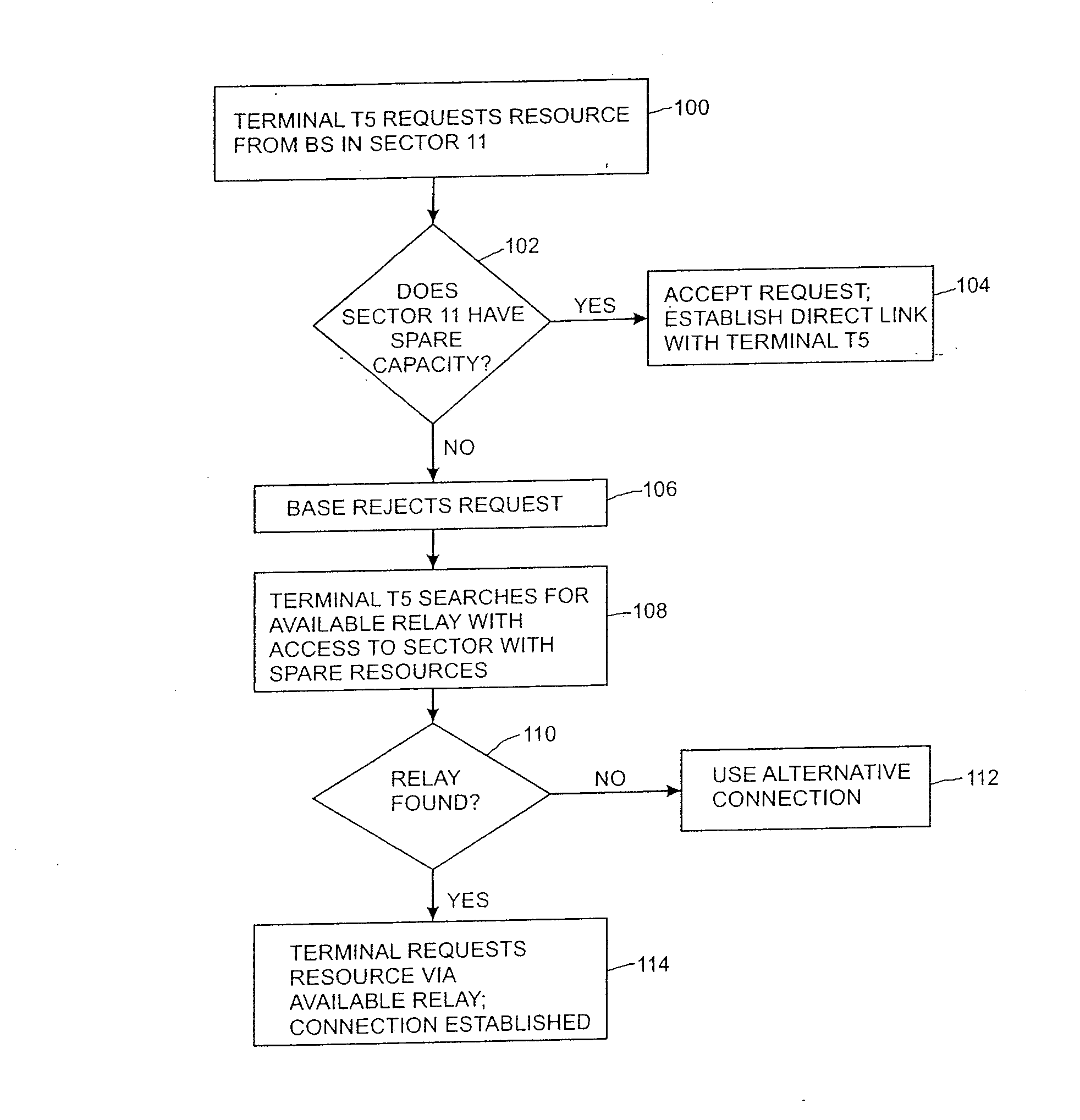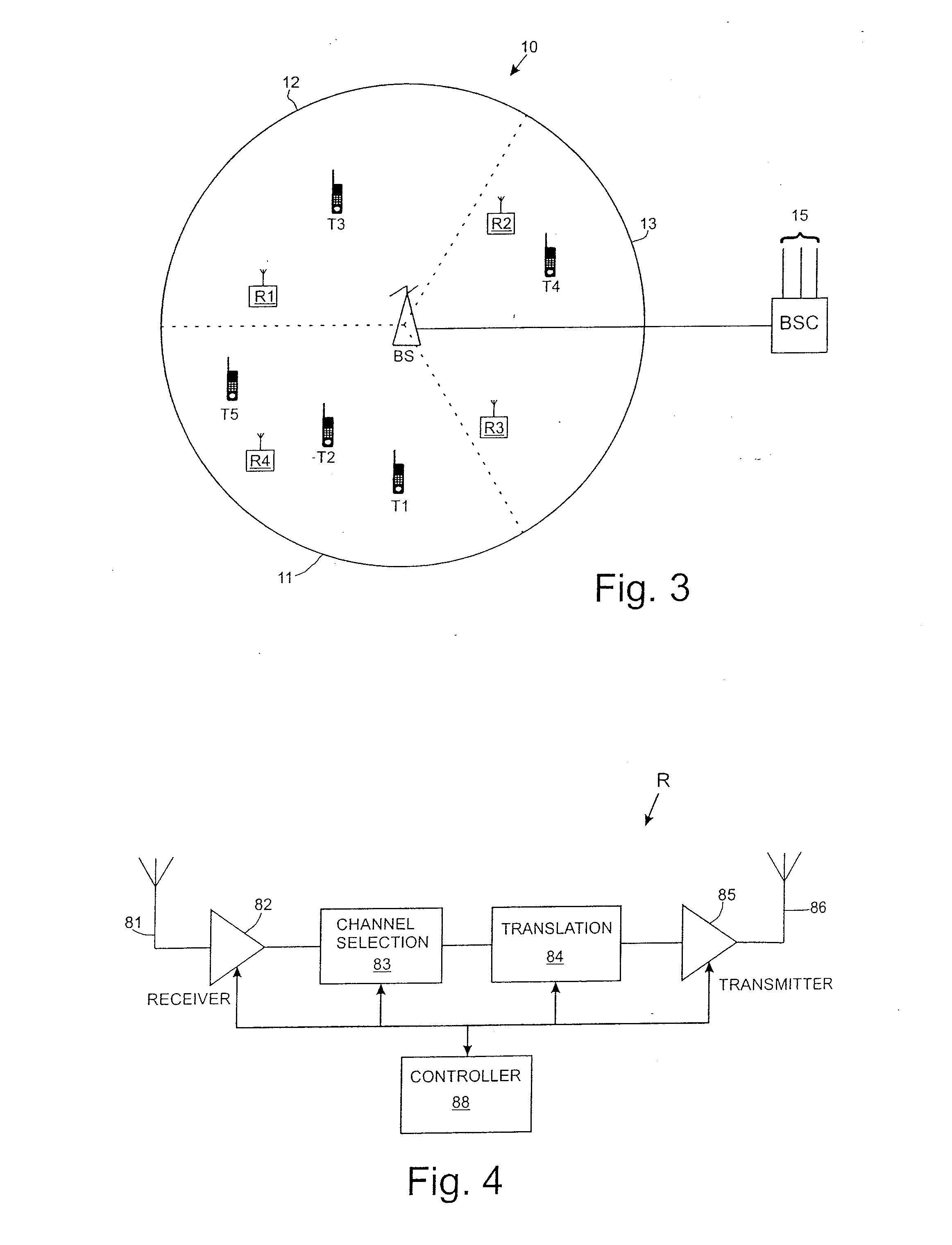Multi-Hop Load Balancing
a load balancing and multi-hop technology, applied in the field of wireless communication systems, can solve the problems of degrading the amount of resources available, cell, sector or beam overloaded, and the traffic demand of the terminals in a cell, sector or beam poorly matches the capacity of that cell,
- Summary
- Abstract
- Description
- Claims
- Application Information
AI Technical Summary
Benefits of technology
Problems solved by technology
Method used
Image
Examples
Embodiment Construction
[0037]FIG. 1 shows part of a cellular communications system. One cell 10 of the system is shown, served by a base station BS. The cell 10 is divided into three sectors 11, 12, 13. In a known manner, each sector is served by a separate antenna, or array of antennas, and other transmission equipment at the base station BS. For simplicity, it will be assumed that each sector is defined by a single beam generated by base station BS. Each sector (beam) 11, 12, 13 is allocated spectrum from the total available spectrum resources of the cell 10. The spectrum allocated to an individual sector may be a distinct sub-set of the total available to the cell or spectrum may be reused in other sectors of the cell. In the case of a third generation (3G) system such as UMTS-HSDPA, the resources comprise bearer channels at particular frequencies, each bearer channel being sub-divided into time slots. As terminals T1, T2 within a sector require service they are allocated resources to support uplink (t...
PUM
 Login to View More
Login to View More Abstract
Description
Claims
Application Information
 Login to View More
Login to View More - R&D
- Intellectual Property
- Life Sciences
- Materials
- Tech Scout
- Unparalleled Data Quality
- Higher Quality Content
- 60% Fewer Hallucinations
Browse by: Latest US Patents, China's latest patents, Technical Efficacy Thesaurus, Application Domain, Technology Topic, Popular Technical Reports.
© 2025 PatSnap. All rights reserved.Legal|Privacy policy|Modern Slavery Act Transparency Statement|Sitemap|About US| Contact US: help@patsnap.com



